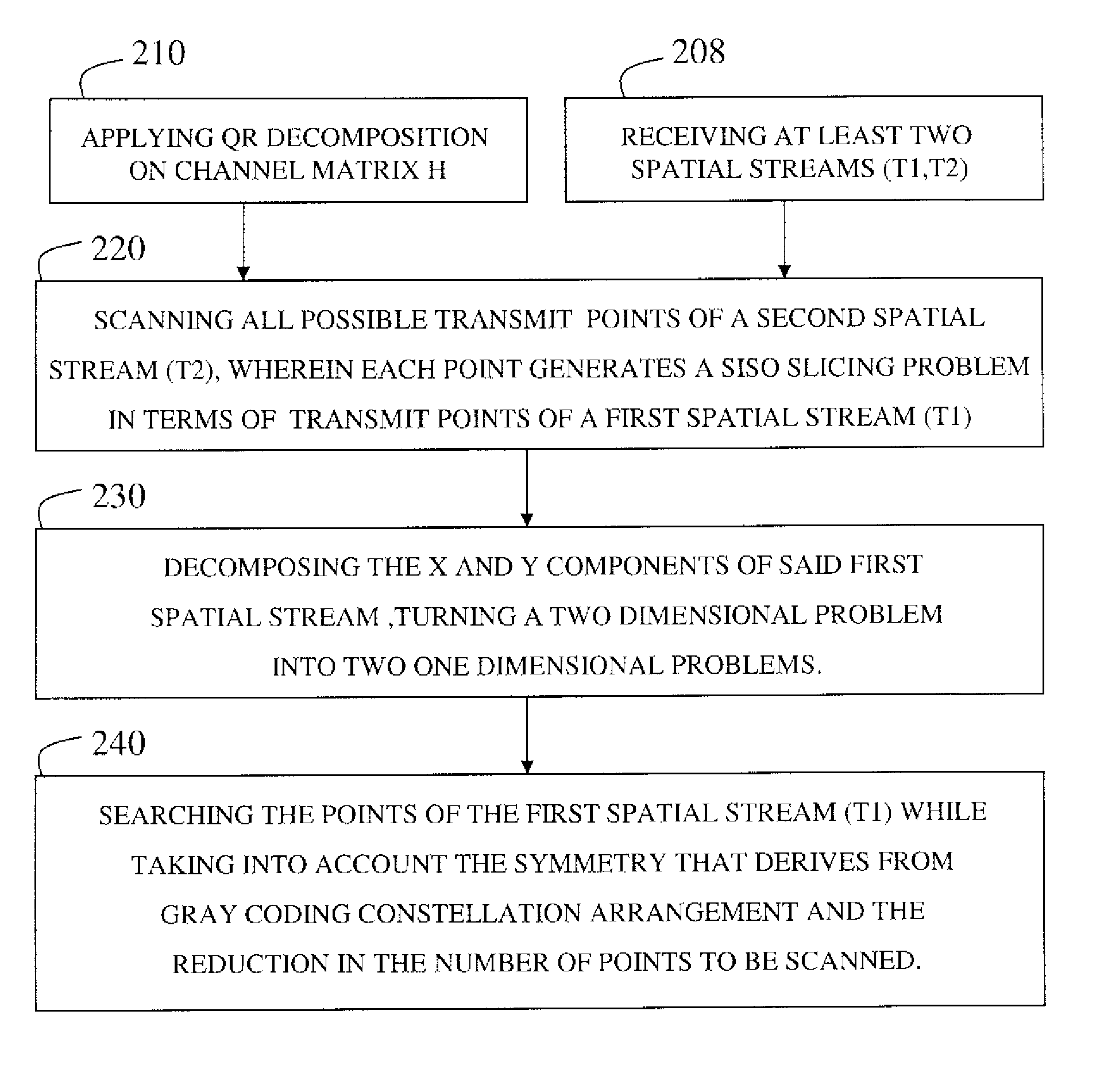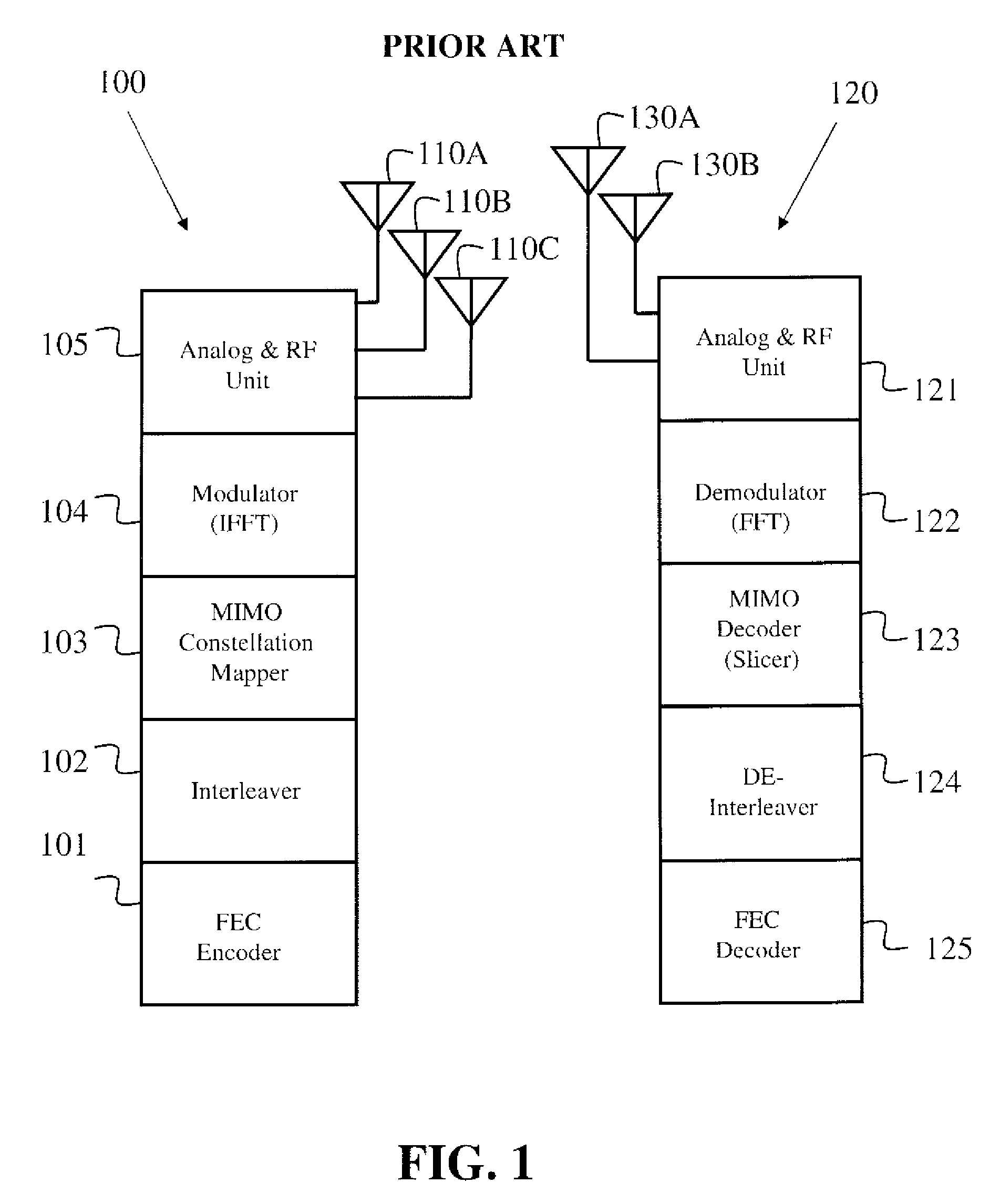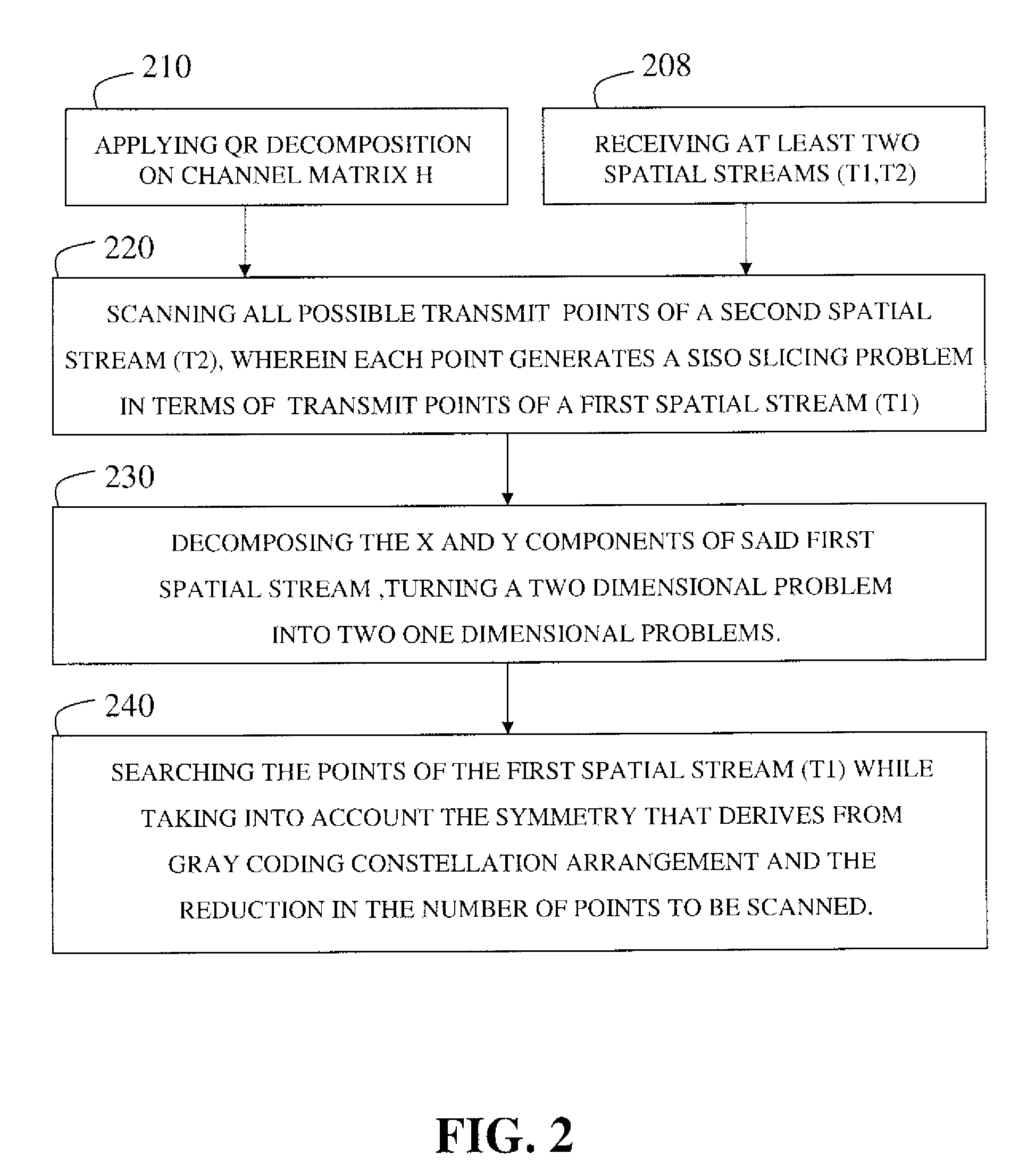Reducing computational complexity in maximum likelihood MIMO OFDM decoder
a decoder and computational complexity technology, applied in the field of wireless communication systems, can solve the problems of linear decoders suffering from poor performance (in ber terms), difficult implementation, and inability to achieve high throughput (over 100 mbps) in wireless communication systems, and achieve the effect of reducing the number of distances
- Summary
- Abstract
- Description
- Claims
- Application Information
AI Technical Summary
Benefits of technology
Problems solved by technology
Method used
Image
Examples
Embodiment Construction
[0023]FIG. 2 is a flowchart diagram showing the various aspects of complexity reduction as practiced according to the present invention according to some embodiments. Specifically, FIG. 2 refers to the decoding process of two spatial streams. It should become clear that the invention may be practiced with any number of spatial streams (being a function of receive and transmit antennas). In block 208, at least two spatial streams, (t1) and (t2), are received by the decoder (simultaneously). In block 210, the channel matrix H is decomposed into a first matrix R and a second matrix Q. The first matrix R is an upper triangular with real-numbers only on its diagonal, and the second matrix, Q is a unitary matrix. In block 220 all possible transmit points of a second spatial stream (t2) are searched (scanned), wherein each point generates a one dimensional decoding problem (SISO slicing) in terms of transmission points of the first spatial stream (t1). In block 230 the first spatial stream...
PUM
 Login to View More
Login to View More Abstract
Description
Claims
Application Information
 Login to View More
Login to View More - R&D
- Intellectual Property
- Life Sciences
- Materials
- Tech Scout
- Unparalleled Data Quality
- Higher Quality Content
- 60% Fewer Hallucinations
Browse by: Latest US Patents, China's latest patents, Technical Efficacy Thesaurus, Application Domain, Technology Topic, Popular Technical Reports.
© 2025 PatSnap. All rights reserved.Legal|Privacy policy|Modern Slavery Act Transparency Statement|Sitemap|About US| Contact US: help@patsnap.com



